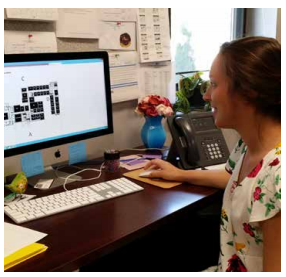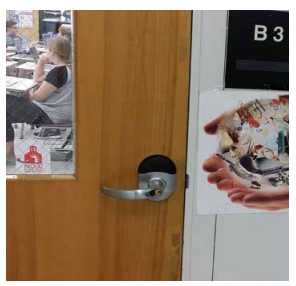Strive for a total layered security solution
The term “layered security” is commonly used in reference to building security, but agreement about what exactly the “layering” entails can vary. In some installations, the layers are described as zones of a property, starting with the perimeter and working in from exterior gates, to doors and corridors, and then interior classrooms or offices.
In other instances, the layers are considered to be more product-oriented—outside camera surveillance is one layer, the hardware that goes on the door is another, and yet another layer of technology is the software coupled with interior cameras, credentials, etc. Both are accurate descriptions, but to have what Karen Evans, President & CEO of Sielox, calls a “total layered security solution,” there’s another piece that must be considered.
“Layered security is the perimeter and all the exterior and interior doors. It’s everything from hardware to cameras to alarm systems,” she says. “It’s product. It’s processes. It’s communication—and the latter is often forgotten.” Bill Lawrence, Security Division Manager with CM3 Building Solutions Inc. puts it this way: “Layered security is not just one system. It’s bringing together the door locks, cameras, access control, alarms, lockdown capabilities— everything—to create a path where they all merge as one single unit.” Having systems merge together seamlessly requires not just the products, but people and processes as well—especially in the event of an emergency. And communication is key.
“Communication always seems to get lost in building a layered security system, but it’s the glue that holds everything together,” Evans says. “And it’s not just how building administration or security personnel communicate with everyone located throughout a facility, it’s also how they communicate back to tell you that they are safe or need assistance.”
Starting the layered approach When it comes to layered security, there isn’t a one-size-fits-all solution. Many factors influence the overall system design, including age of the facility, the credential management platform and protocols, budget and long-term security strategy.
Deciding what’s needed requires an in-depth conversation with your client. Sielox’s Evans says that it starts with “if-when” questions. “I’ll ask, ‘What do you do if and when this happens? Now what do you do if this occurs?’” she says. “It’s not always about what happens in emergency situations, but also everyday circumstances. It helps me to understand what products, people and communications processes are in place—and which are lacking.”
Lawrence says his standard questions often include:
What are the existing systems?
• How much traffic do you generally have?
• How do you handle visitors?
• What areas are open to the public?
• What are the limitations of your system now?
• What do you want to be able to do?
The last one, he says, typically gets to the pain point of what’s not working and what the client really desires. Phase in the layers While a total layered solution would be the end-goal for most facilities, it’s not always doable all at once because of budget constraints. In those cases, Lawrence always advises doing it in phases, starting with the perimeter and working inward to the most significant sections of a building.
“Start with the one that is most critical and important, then add the other elements as budget allows,” he says. The challenge of wireless—no more Evans says she still sees reluctance from some end users to use wireless as part of the interior security solution, although it is proving to be reliable and provide a lower cost-per-door access control solution for their integration partners.
Lawrence gets why some people still need convincing about wireless. He was against it just a few years back. “I used to be totally against it,” he says. “I had bad experience after bad experience. The failure rate was too high, but now it’s the complete opposite. It’s proven and I’m a big advocate for wireless and the many advantages it offers. I don’t hesitate to offer it as part of a layered solution.”
Layer with the future in mind Another challenge with total layered solutions is helping clients think beyond their current budget and needs. “They may think they don’t want a particular product or component right now, but that could change,” Evans says When making security decisions today, it’s important to be conscious of decisions for the future, including how products integrate with other systems.
Lawrence recalls a client who only wanted analog cameras, only to eventually decide he wanted to upgrade to IT-based ones. “It doesn’t cost anything to do it right the first time, but it costs a lot to not consider something the first time around,” he says. “The demands of technology and new innovations will eventually impact your system in the coming years.” Advances make layering easier Automation and integration are critical to layered security. With the way these complex systems absorb information and then take action—alerting you, locking down, etc.—they have actually simplified security and the way a facility is managed.
Consider a total layered security approach, one that incorporates all the layers—a client’s products, procedures and, most importantly, their communication practices. If you want an Allegion integrator sales rep to assist your client, contact us today online or by calling 888-758-9823.
About Allegion
Allegion (NYSE: ALLE) is a global pioneer in safety and security, with leading brands like CISA®, Interflex®, LCN®, Schlage®, SimonsVoss® and Von Duprin®. Focusing on security around the door and adjacent areas, Allegion produces a range of solutions for homes, businesses, schools and other institutions. Allegion is a $2 billion company, with products sold in almost 130 countries. For more, visit www.allegion.com.